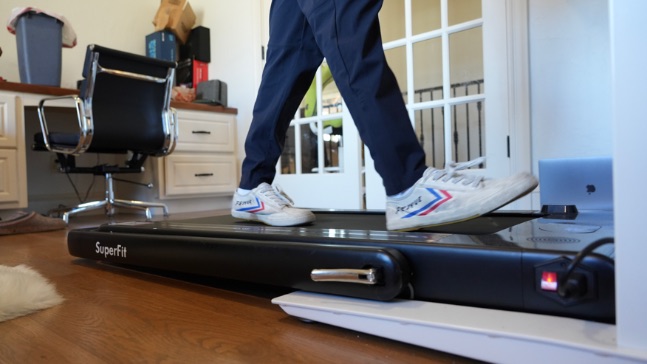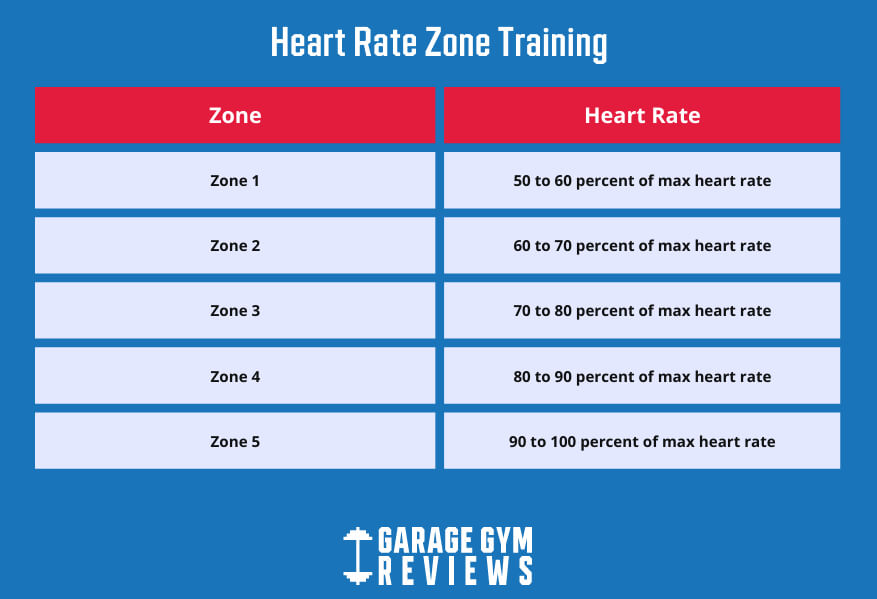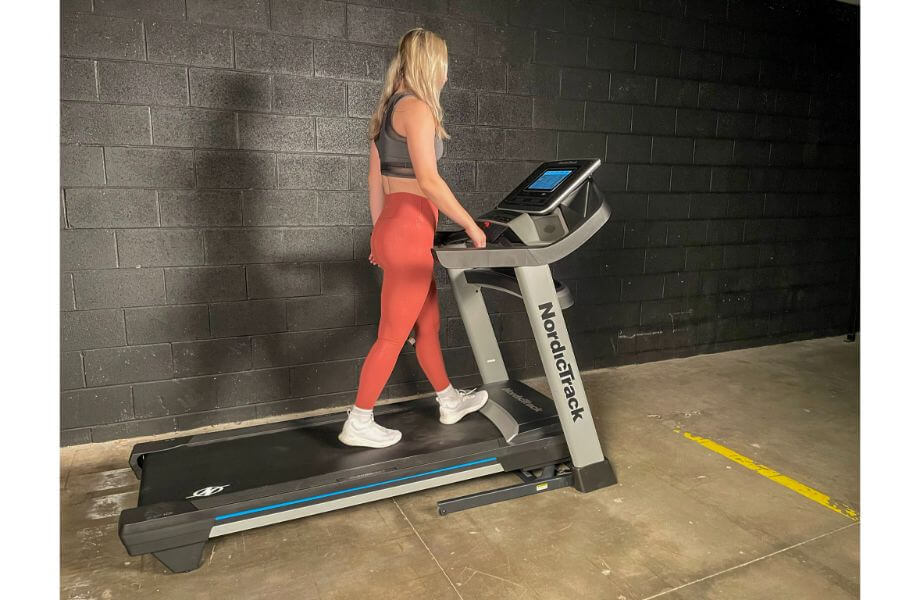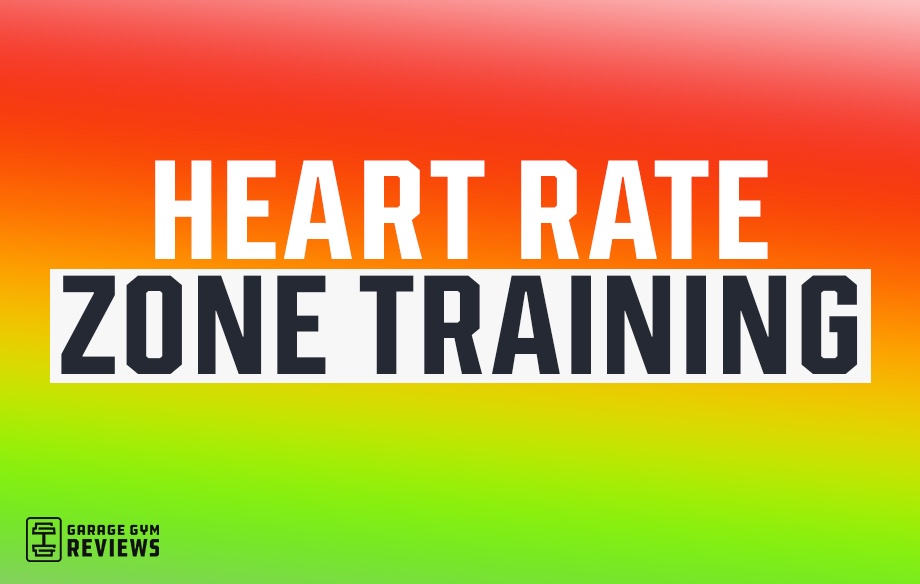We test and review fitness products based on an independent, multi-point methodology. If you use our links to purchase something, we may earn a commission. Read our disclosures.
Your body is a complex machine with different energy systems to fit the metabolic needs of varying situations. To maximize time on the treadmill or lifting weights, many people try to get their heart rate within a specific zone to burn the most calories, or in some cases, fat. The fat-burning heart rate zone is the zone where your body uses fat as its primary fuel source. Some people choose to focus on this zone to maximize their fat burn.
But where is your fat-burning zone, and how do you know you’re there? Monitoring your heart rate can give you many insights into your health and fitness. If you’re specifically looking to target body fat, you can use your heart rate to optimize your fat burn. However, as you’ll see, staying in the fat-burning zone isn’t always the most effective way to lose weight or fat.
What is the Fat-Burning Heart Rate Zone?
Your body has a complex network of energy systems. These systems use different fuel sources like sugar, carbohydrates, and fat based on your exertion level and the condition of your body. Your fat-burning heart rate zone is the heart rate range in which your body primarily uses fat as its main fuel source.
As much as most people would like these systems to kick in at easily defined points, they tend to overlap and intermingle as you increase and decrease your exertion. Consequently, you’re burning a mix of fuels during most workouts. Unless, that is, you purposely stay at a relatively steady state within a certain zone. You’ll still burn different types of fuels, but there’s typically a main fuel source.
When you need energy in a hurry, your body uses either stored ATP (adenosine triphosphate), which is your body’s main energy carrier, or carbs, which are relatively easy to break down. However, when you’re moving at a low to moderate pace, your body has time to use oxygen to break down and use fat (also known as lipids) for energy.1 It’s when you’re at this low to moderate intensity that you’re in the fat-burning heart rate zone.

According to the American Council on Exercise1, the fat-burning heart rate zone is typically between 55 and 72 percent of your maximum heart rate.
If you’re following these guidelines, much of the time, you’ll be burning fat. However, while you do burn fat in this zone, the research suggests that staying in the moderate-intensity zone isn’t the most efficient way to get rid of fat.
5 Target Heart Rate Zones
Heart rate zones give you a clue as to the energy sources your body uses to get energy from ATP. Aerobic exercise2 like running and cycling requires oxygen to extract ATP from carbs, fats, and amino acids (protein). Anaerobic exercise uses a different method or energy system that does not use oxygen to extract energy. Sprinting and weightlifting are examples of the types of short, intense activities that are anaerobic.
Your body requires oxygen to break down fat, which means anaerobic exercise doesn’t typically use fat as a fuel source1.
Your heart rate zones3 don’t precisely correspond with your energy systems, but they’re a way to make some generalizations and estimate which fuel sources you’re using based on which of the five zones you’re in.

- Moderate: Sometimes called very light or zone 1, this zone is when the heart rate is at 50 to 60 percent of your maximum heart rate. This low-intensity zone is where you recover. If you have a light day or active rest day, this is where you want your heart rate to be. You might not sweat in this zone, and you can easily carry on a conversation.
- Fat-burning: Also known as light or zone 2, the fat-burning zone is typically at 60 to 70 percent of your maximum heart rate. In this zone, your body uses fat as its main energy source. You may have a light coat of sweat, but you should be able to carry on a conversation.
- Aerobic: The aerobic heart rate zone is sometimes called zone 3 or the moderate zone in some circles. It’s where the heart rate stays at 70 to 80 percent of your max heart rate. In theory, you can stay in this zone for a long time, and it’s where you make cardiovascular gains. You burn a mix of fuels in this zone but primarily rely on carbs. You can still talk when in this zone, but it may be harder.
- Anaerobic: The anaerobic heart rate zone is also known as hard or zone 4, and you’re at 80 to 90 percent of your max heart rate. Your anaerobic zone is where you make speed and endurance gains, but you have to work hard to do it. You might be able to give one-word answers in this zone.
- Maximum: The maximum zone, also called zone 5, is when you’re at 90 to 100 percent of your max heart rate. You won’t be able to stay at this level for long because you’re at or nearing your peak. You also won’t be able to carry on a conversation.
How to Measure Your Heart Rate
The first step to measuring your heart rate is to find your pulse. You’ve got four options, according to the American Heart Association (AMA)4:
- Top of the foot
- Side of the neck
- Inside the elbow
- Wrists
The wrists are easiest to access when you’re taking your own heart rate. The location is on the inside of the wrist, about one inch down from the wrist on the thumb side. Try using your pointer and middle finger and gently press to see if you can feel your pulse. It might take some practice so feel around if you don’t feel it right away.
Practice by calculating your resting heart rate. Set a timer for 10 seconds and count how many times your heart beats in that 10 seconds. Then multiply that number by six to see how many times your heart beats per minute, also known as your resting heart rate. (You can count for a whole minute, but it’s easy to lose track the longer you count.)
Now you can calculate your personal heart rate zones5. The easiest way is to first calculate your maximum heart rate by subtracting your age from 220. If you were 40 years old, for example, your maximum heart rate would be 180 beats per minute (bpm).
Now you can use your maximum heart rate to calculate your specific heart rate zones. Multiply your maximum heart rate by the zone percentage. Using the above example, you would multiply 180 by .70 to find 70 percent of your maximum heart rate, which is 128 bpm. That’s the heart rate target you would use to stay in the fat-burning zone. You can calculate your other zones by changing the percentage by which you calculate your max heart rate.
For reference, the AMA6 considers 60 to 100 bpm to be the average, healthy range. However, trained athletes may have a heart rate that averages lower.
Tip: A heart rate monitor makes it easier to track your heart rate while you’re exercising. Chest straps are the most accurate, but many fitness trackers and watches can at least give you a close estimate.
Fat-Burning Heart Rate Zone Workouts
It doesn’t usually take much exertion to stay in the fat-burning heart rate zone. You can do it with most forms of aerobic exercise, but keep an eye on your heart rate and keep your exertion at a low intensity. Some activities that easily keep you in the fat-burning zone include:
- Walking
- Cycling
- Swimming
- Elliptical
- Low-intensity aerobics
Some people can do a light jog and stay in the fat-burning zone, while others will get in the zone when doing a brisk walk. Everyone is different. Don’t worry about what everyone else is doing. Watch your heart rate and adjust your speed or intensity to stay in the fat-burning zone.
You can also get into the fat-burning zone while weightlifting, but you need to keep things low (weight) and slow (speed). For example, create a circuit with the following five exercises. Do each exercise for 60 seconds with no rest in between. Then, rest for two minutes between circuits and complete four to five circuits based on your goals and heart rate.
Your heart rate will drop during your rest periods, but you’ll still get 20 to 25 minutes in the fat-burning zone. Remember, you don’t want your heart rate to get too high so keep the weight low and pace s-l-o-w.
- Wall pushups (should be easy but move your feet further from the wall to make them harder)
- Overhead press
- Dead bugs
- Kickstand Russian deadlift with or without weight (30 seconds on each side)
- Plank (go to your knees or elevate your hands if your heart rate gets too high)
Is the Fat-Burning Heart Rate Zone Best for Weight Loss?
The fat-burning heart rate zone isn’t necessarily the best for weight loss. Most people have a limited amount of time to exercise. The CDC recommends7 working out for 150 minutes per week to maintain your weight. If you work out for 30 minutes per day, five days per week, you have a limited time to burn calories.
This recommendation is how much you need to exercise to maintain your weight, not lose it. You may need to work out longer than 30 minutes five days per week if your goal is to lose weight or body fat by staying in the fat-burning heart rate zone.
Low-intensity activities use a higher percentage of fat, but they don’t burn as many overall calories unless you do them for a long time. For example, if you went for a four or five-hour hike that kept your heart rate in the fat-burning zone, that would be a case where you’re burning a good amount of fat.

However, minute for minute, most people will burn more total calories and, in some cases, more fat calories when doing moderate to high-intensity exercise. A March 2015 study8 published in the Journal of Strength and Conditioning Research compared the calories burned doing aerobic (steady-state), resistance, and combined high-intensity interval training (HIIT). Researchers found that HIIT, which puts the heart rate above the fat-burning zone, burned more calories than steady-state exercise during an equivalent amount of time.
A January 2017 study9 published in the Journal of Diabetes Research found that to achieve similar fat loss between HIIT and steady-state exercise, it required doing moderate steady-state exercise for twice as long as HIIT to get the same results.
A May 2017 meta-analysis10 published in Obesity Science and Practice that included results from 18 articles found that working out at a higher intensity did a better job of improving cardiopulmonary health and VO2Max, a common measurement of fitness. In this analysis, higher-intensity workouts improved fitness and decreased body fat better than both low-intensity and moderate-intensity activities, even when the high-intensity activity was done for a shorter amount of time.
A low-intensity workout can burn through fat stores. But minute for minute, you’ll be more effective if you add in high-intensity workouts or high-intensity intervals into your workouts.
HIIT is a great option because you alternate between periods of high-intensity and low-intensity exercise. Those short rest periods let you work harder during high-intensity bursts of activity. HIIT workouts are also designed to be short, as in less than 20 minutes. You simply can’t burn as many calories, whether those calories come from stored fat or another source, in 20 minutes doing a low or moderate-intensity exercise.
You can turn a running, cycling, or swimming workout into HIIT, but HIIT isn’t the only option for increasing your calorie burn. Circuit training and interval training are ways to add periods of vigorous activity to your workouts and increase your fat burn.
Fat-Burning Heart Rate Zone: Final Thoughts
Your fat-burning heart rate zone is where your heart stays around 60 to 70 percent of your maximum heart rate. In this zone, your body primarily uses fat as its main energy source. However, your body burns that fat at a relatively slow rate. If your goal is to burn fat, you can stay in the fat-burning zone. However, you’ll burn more fat by factoring in the total number of calories burned, too.
A more efficient way to burn fat is to increase the intensity of your workouts. You can get good results by adding short bursts of high-intensity activity to your workouts. For example, walking faster for 60 seconds, then returning to your normal pace for 60 seconds, and continuing to alternate. This way, the total amount of calories increases, and your workouts don’t have to get longer.
Fat-Burning Heart Rate Zone: Q&A
What is a good fat-burning heart rate?
A good fat-burning heart rate will vary from person to person. Your age, gender and fitness level will all influence your heart rate and heart rate zones. Calculate your personal fat-burning heart rate by subtracting your age from 220 and multiplying the result by .7 to find 70 percent of your max heart rate. Staying around this number will put you in your fat-burning heart rate zone.
How long should you be in the fat-burn heart rate zone?
You’re at such a low intensity when in the fat-burning zone that you can be there for a long time. You’ll get heart health benefits, weight loss, fat loss and overall fitness benefits by adding in intervals or periods of vigorous-intensity exercise.
In this type of workout, you’ll move in and out of the fat-burning zone, but you’ll also burn through more total calories. As the previously mentioned 2017 meta-analysis found, vigorous-intensity exercise will do as much or more for your heart, lungs and overall fitness in a shorter time.
Is it better to be in fat burn or cardio?
In truth, one isn’t better than the other. Cardio exercise offers excellent benefits for your heart, circulation and lungs. The fat-burning zone lets you recover while still burning calories. It’s crucial to understand the zones and how to use them. You want to stay in the fat-burning zone when you’re recovering from a hard workout, like on your active rest days.
And, you need more than cardio and fat burning to lose fat and weight. Make sure you’re lifting weights two to three times per week to increase your lean muscle mass. Muscle burns more calories than fat. By building more of it, you’ll burn more calories, whether you’re working out or sitting on the couch.
References
- The Three Primary Energt Pathways Explained. ACE Exam Preparation Blog. 2019, March 7.
- Patel H, et al. Aerobic vs anaerobic exercise training effects on the cardiovascular system. 2017; 9(2): 124-138. doi: 10.4330/wjc.v9.i2.134
- Green, Daniel J. The Accuracy of Heart Rate-Based Zone Training Used Predicted Versus Measured Maximal Heart Rate. Certified, June 2019.
- All about heart rate (pulse). American Heart Association. 2015. https://www.heart.org/en/health-topics/high-blood-pressure/the-facts-about-high-blood-pressure/all-about-heart-rate-pulse
- Target Heart Rate and Estimated Maximum Heart Rate. Centers for Disease Control and Prevention. 2023.
- Target Heart Rate Charts. American Heart Association. 2021.
- Physical Activity Guidelines. Centers for Disease Control and Prevention. 2022. https://www.cdc.gov/physicalactivity/index.html
- Falcone PH, et al. Caloric expenditure of aerobic, resistance, or combined high-intensity interval training using a hydraulic resistance system in healthy men. 2015; 29(3): 779-785. doi: 10.1519/JSC.0000000000000661
- Haifeng Z, et al. Comparable effects of high-intensity interval training and prolonged continuous exercise training on abdominal visceral fat reduction in obese young women. 2017; 2017. doi: 10.1155/2017/5071740
- Turk Y, et al. High intensity training in obesity: A meta-analysis. 2017; 3(3): 258-271. doi: 10.1002/osp4.109
Further reading

Looking for a heart-pumping, sweat-inducing battle rope workout? We’ve got you covered. Read more

With fantastic value and a sturdy build, this bench is pretty simple but gets the job done. Find out more in this Bells of Steel Flat Utility Bench review. Read more

Need advice on how to move an elliptical? This guide will help you through the heavy lifting. Read more

Your body is a complex machine with different energy systems to fit the metabolic needs of varying situations. To maximize time on the treadmill or lifting weights, many people try to get their heart rate within a specific zone to burn the most calories, or in some cases, fat. The fat-burning heart rate zone is the zone where your body uses fat as its primary fuel source. Some people choose to focus on this zone to maximize their fat burn. » Read more about: Fat-Burning Heart Rate Zone: Secret to Losing Weight, or All-Out Myth? » Read more

